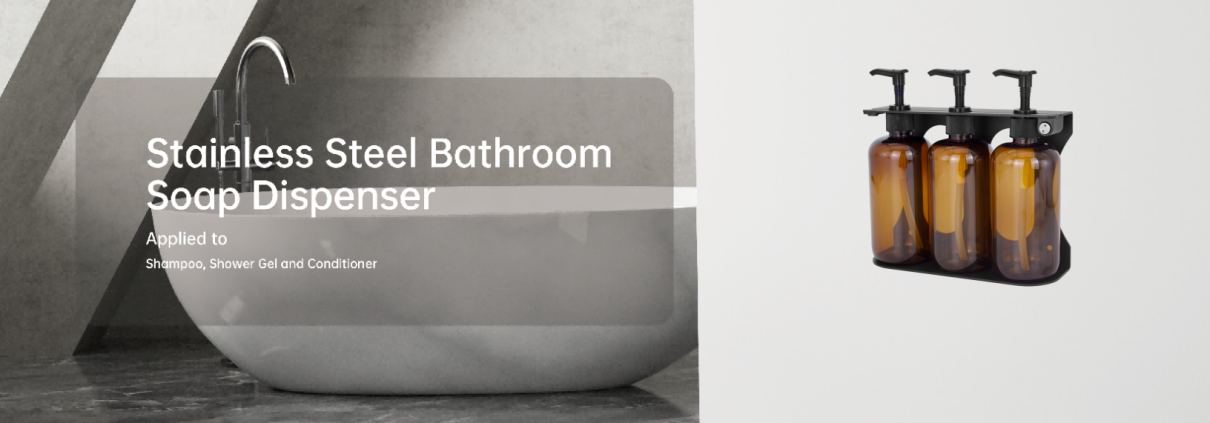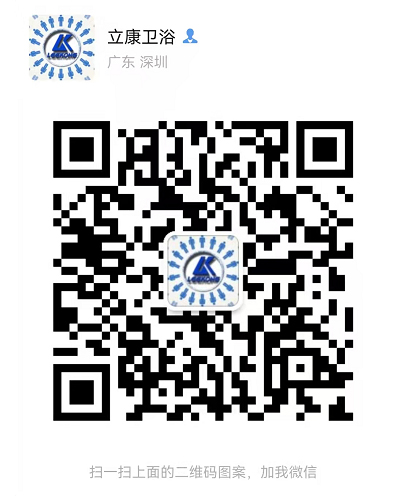The Impact of the End of U.S.-China Reciprocal Tariffs: Implications for Hotel Industry
Introduction
The trade war between the United States and China, which began in 2018, has had far-reaching effects on global supply chains, manufacturing costs, and consumer prices. One of the most significant aspects of this trade conflict was the imposition of reciprocal tariffs on billions of dollars worth of goods. However, with recent negotiations suggesting a potential end to these tariffs, industries worldwide are preparing for a shift in trade dynamics.
This blog post explores the potential impacts of the termination of U.S.-China reciprocal tariffs, with a focus on the hotel industry, the soap dispenser market, and companies like Leekong (A professional manufacturer of hotel soap dispensers and paper towel dispensers).
- Overview of U.S.-China Reciprocal Tariffs
1.1 Background of the Trade War
The U.S.-China trade war began when the Trump administration imposed tariffs on Chinese goods to address trade imbalances and intellectual property concerns. China retaliated with its own tariffs, leading to increased costs for businesses reliant on cross-border trade. The escalation and de-escalation of the U.S.-China reciprocal tariffs in 2025 unfolded amid heightened trade tensions and strategic economic maneuvering. Initial U.S. Tariff Hikes (February-March 2025). The U.S., under the Trump dministration, imposed a 20% tariff on all Chinese goods in February, citing concerns over synthetic opioids (fentanyl supply chains).
By March, this was raised to 20%, further straining bilateral trade.
“Reciprocal Tariff” Announcement (April 2025)
On April 2, Trump signed an executive order imposing a 34% “reciprocal tariff” on Chinese goods (on top of existing tariffs), bringing the total to 54%. The U.S. justified this by claiming trade imbalances, using a formula based on trade deficits. China retaliated swiftly, raising tariffs on U.S. imports from 34% to 84% on April 10, then to 125% on April 12, effectively blocking most U.S. exports.
Economic and Political Fallout
The tariffs triggered global market turmoil, with U.S. stocks plunging (Dow Jones losing 3,000 points in a day) and supply chains scrambling.
China leveraged multilateral alliances, signing agreements with ASEAN and forming an “anti-U.S. tariff coalition” with Japan, South Korea, and others.
Rare earth export controls by China disrupted U.S. defense and tech sectors (e.g., F-35 production delays).
De-escalation and Temporary Truce (May-July 2025)
Geneva Talks and Tariff Suspension (May 12, 2025)
Under mounting economic pressure (U.S. inflation, corporate backlash), both sides reached the Geneva Joint Statement, agreeing to:
Cancel 91% of retaliatory tariffs, retaining only a 10% baseline tariff.
Suspend 24% of tariffs for 90 days (a cooling-off period)6.
The U.S. kept its 20% “fentanyl tariff” (unrelated to trade deficits), while China maintained strategic countermeasures6.
Final Retreat (July 2025)
By mid-July, the U.S. made three key concessions:
Accepted China’s terms for negotiation timing and location.
Lifted restrictions on NVIDIA’s H20 AI chip exports to China.
Shifted rhetoric to “friendly competition”, signaling a truce4.
The 125% Chinese tariffs on U.S. goods were effectively lifted, though structural disputes (tech bans, subsidies) remained unresolved46.
Key Drivers of the Resolution
U.S. Domestic Pressure: Rising inflation, agricultural losses (e.g., Iowa pork producers losing $2.3B), and corporate lobbying forced a retreat.
China’s Strategic Countermeasures: Rare earth controls, regional trade pacts (e.g., RCEP), and supply chain diversification (e.g., Mexico, ASEAN) weakened U.S. leverage.
Symbolic Diplomacy: The establishment of a standing communication mechanism (per the Geneva deal) helped prevent further escalation.
1.2 Key Affected Industries
– Electronics & Machinery (e.g., semiconductors, industrial equipment)
– Consumer Goods (e.g., furniture, apparel)
– Hospitality Supplies (e.g., soap dispensers, linens)
1.3 Expected Changes with Tariff Removal
– Reduced import/export costs
– Improved supply chain efficiency
– Potential reshoring or diversification of manufacturing
- Impact on the Hotel Industry
2.1 Reduced Costs for Hospitality Supplies
Hotels rely heavily on imported goods, including:
– Furniture (often manufactured in China)
– Amenities (soap dispensers, toiletries, linens)
-Electronics (TVs, smart room systems)
With tariffs lifted, hotels may see:
✔ Lower procurement costs → Higher profit margins or reinvestment in upgrades
✔ More competitive pricing from suppliers like Leekong
2.2 Potential Increase in U.S. Hotel Investments
– Chinese investors may find U.S. hotel assets more attractive if trade tensions ease.
– U.S. hotel chains expanding into China may benefit from smoother operations.
2.3 Challenges: Will Savings Be Passed On?
– Some hotel groups may retain cost savings rather than lowering guest prices.
– Labor and operational costs (unrelated to tariffs) could offset gains.
- The Soap Dispenser Market: A Case Study
3.1 How Tariffs Affected the Industry
– Many soap dispensers (manual and automatic) are manufactured in China.
– U.S. importers faced 25% tariffs, increasing costs by ~15-30% after supply chain adjustments.
3.2 Post-Tariff Scenarios
Scenario 1: Price Drops for Bulk Purchases
– Hotels buying soap dispensers in bulk could see 10-20% cost reductions.
– Companies like Leekong (if a supplier) could gain market share with competitive pricing.
Scenario 2: Shift to Alternative Suppliers**
– Some U.S. businesses diversified to Vietnam or Mexico; they may not return to China immediately.
– Chinese manufacturers might lower prices to regain lost customers.
3.3 Sustainability and Innovation
– With lower costs, hotels may invest in **higher-end, eco-friendly dispensers**.
– Smart dispensers (IoT-enabled) could see increased adoption.
- Leekong and Other Supply Chain Players
4.1 Who Is Leekong? (Hypothetical Example)
Assuming Leekong is a Chinese manufacturer of hotel amenities (soap dispensers, toiletry kits)**:
– Pre-tariff: Competitive pricing made it a key supplier for U.S. hotels.
– During tariffs: Lost market share due to increased costs.
– Post-tariff: Could regain business if prices become competitive again.
4.2 Strategic Moves for Companies Like Leekong
– Repricing strategies: Adjust export prices to attract U.S. buyers.
– Localized production: Set up assembly in Southeast Asia to avoid future tariffs.
– Partnerships: Collaborate with U.S. hotel chains for long-term contracts.
4.3 Broader Implications for Supply Chains
– Reshoring vs. Nearshoring: Some U.S. firms may still prefer non-China suppliers.
– Inventory Adjustments: Businesses may restock Chinese goods if tariffs end.
- Potential Risks & Uncertainties
5.1 Will Tariffs Fully Disappear?
– Some sectors (e.g., tech) may retain restrictions due to national security concerns.
– Political changes in the U.S. or China could reverse progress.
5.2 Inflation & Other Cost Factors
– Even without tariffs, inflation, shipping costs, and labor shortages could keep prices high.
5.3 Long-Term Trade Relations
– The U.S. and China may remain strategic competitors, affecting future policies.
- Conclusion & Key Takeaways
The end of U.S.-China reciprocal tariffs could bring:
Lower costs for hotels** (especially for imported amenities like soap dispensers).
Opportunities for suppliers like Leekong to regain market share.
Potential for more sustainable, high-tech hotel upgrades.
However, businesses should:
Monitor policy changes closely—tariffs could return.
Diversify supply chains to mitigate future risks.
Negotiate contracts wisely to lock in lower prices if tariffs end.
For the hotel industry, this could mean better profit margins and improved guest amenities. For soap dispenser manufacturers and companies like Leekong, it’s a chance to reclaim lost business and innovate.
The end of tariffs won’t solve all trade challenges, but it’s a significant step toward more stable global commerce.



